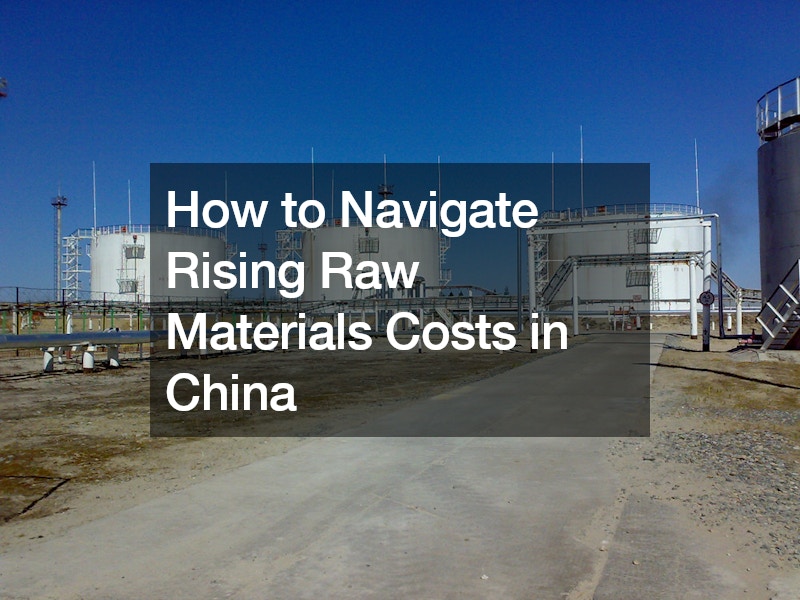The winds of change are blowing through China’s manufacturing landscape. For years, businesses have enjoyed a reputation as the “world’s factory” thanks to readily available and relatively inexpensive raw materials. But buckle up because things are shifting. Raw material costs in China are on the rise, and businesses need to adapt. Don’t fret – this guide will equip you with the knowledge and strategies to navigate these choppier waters.
Why the Price Hike? Buckle Up, It’s a Multi-Lane Road
There’s no single culprit behind the rising cost of raw materials in China. It’s more like a busy highway with several factors converging:
Global Demand: As the global economy picks up steam, the demand for raw materials is surging. This increased competition for a finite pool of resources naturally pushes prices upwards. Supply Chain Disruptions: Remember that global pandemic we’re all so fond of? Yeah, it’s still having ripple effects. Supply chain disruptions and logistical bottlenecks are making it harder and more expensive to move raw materials around the world. Environmental Regulations: China’s tightening environmental regulations are impacting production processes and limiting access to some resources. While good for the planet in the long run, it can lead to short-term price fluctuations. Domestic Policies: China’s government policies can also influence raw material prices. Export restrictions on certain materials or stockpiling initiatives can create artificial scarcity and drive prices up. Feeling the Pinch: How Rising Costs Impact Your Business
So, how does this translate to your bottom line? Here are some potential consequences:
Higher Production Costs: When raw materials cost more, your production costs naturally go up. This can squeeze your profit margins and make it harder to compete on price. Product Price Increases: Many businesses are forced to pass on some of the increased costs to consumers by raising product prices. This can impact sales and customer loyalty if not managed carefully. Supply Shortages: In some cases, rising costs and supply chain disruptions can lead to shortages of specific raw materials. This can disrupt production schedules and cause delays. Navigating the Maze: Strategies for Success
Don’t despair! There are ways to navigate this new landscape and ensure your business continues to thrive:
Embrace Efficiency: Take a hard look at your production processes and identify areas where you can become more efficient. Minimizing waste and optimizing material usage can help offset some of the cost increases. Diversify Your Supply Chain: Reliance on a single supplier can leave you vulnerable to price fluctuations. Consider diversifying your supplier base to spread the risk and potentially find more competitive pricing. Focus on Innovation: Explore alternative materials or production methods that might be less susceptible to price hikes. Innovation can be your key to staying ahead of the curve. Open Communication: Communicate openly with your customers about potential price increases. Explain the reasons behind the change and emphasize the value proposition of your products. Hedge Your Bets: Depending on your industry, consider hedging strategies to mitigate the impact of price fluctuations. This involves financial instruments that can help you lock in prices in advance. Remember, knowledge is power. Stay informed about global trends, industry-specific challenges, and Chinese government policies that might impact raw material prices. The more you know, the better equipped you’ll be to adapt your strategies. The Road Ahead: Embracing Change and Building Resilience
The rising cost of raw materials China presents a challenge, but it’s also an opportunity to build resilience and adapt your business for long-term success. By embracing efficiency, diversification, and innovation, you can navigate these choppy waters and emerge stronger than ever. Remember, change is inevitable, butRemember, change is inevitable, but with the right strategies and a proactive approach, you can turn it into an advantage. Here are some additional thoughts to consider:
Invest in Long-Term Relationships: Building strong relationships with reliable suppliers can be invaluable during times of price volatility. A good supplier will work with you to find solutions and ensure a consistent supply of materials. Focus on Sustainability: Sustainability isn’t just good for the environment; it can also make good business sense. By adopting sustainable practices and exploring recycled or alternative materials, you can potentially reduce your reliance on raw materials with volatile prices. Think Outside the Box: Don’t be afraid to explore new markets or production locations. While China might have been the go-to option in the past, other countries might offer more competitive raw material prices or more stable supply chains. The Takeaway: A Brighter Future Awaits
The rising cost of raw materials in China is undoubtedly a challenge. However, by staying informed, adapting your strategies, and embracing innovation, you can navigate this new landscape and ensure your business continues to thrive. Remember, the most successful businesses are those that can adapt to change. So, see this as an opportunity to build resilience, explore new possibilities, and ultimately emerge stronger than ever before.
Bonus Tip: Consider collaborating with other businesses in your industry. By pooling resources and exploring joint sourcing strategies, you might be able to negotiate better deals with suppliers and gain more leverage in the market.
With a proactive approach and a touch of ingenuity, you can transform this challenge into a springboard for future success. The road ahead might have some bumps, but with the right tools and mindset, you’ll be well on your way to a bright and prosperous future in the ever-evolving landscape of Chinese manufacturing.
.


